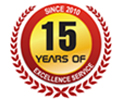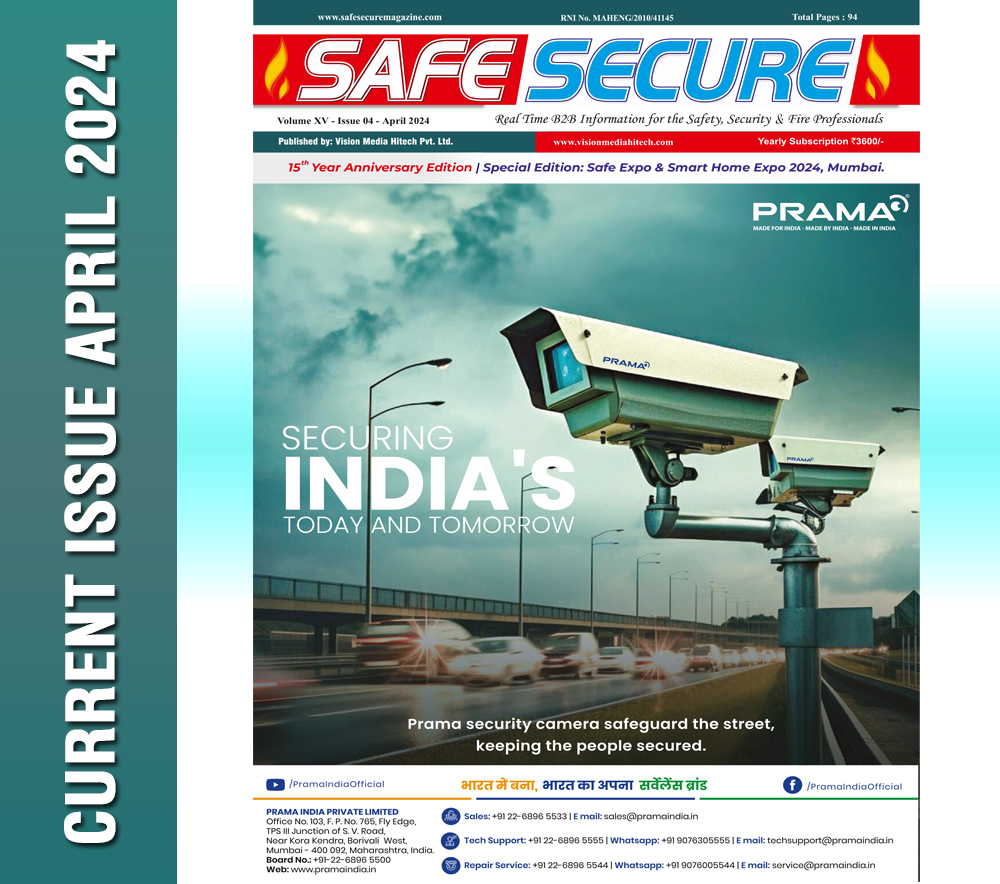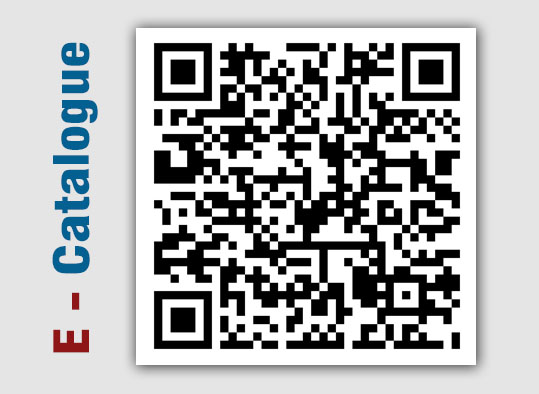REMOTE MONITORING IS A BOON TO BANKING INDUSTRY

Mr. Parthesh Dhaggal Founder, Enceplon.
Remote monitoring is a veritable boon to banking industry as it helps to solve many problems faced by this industry. More and more banks are installing remote monitoring systems not only from safety and security point of view but also to gain business intelligence and insights. COVID 19 despite creating many challenges also ushered in new opportunities through remote monitoring which is growing apace not only worldwide but also in India.
A robust surveillance system that can be remotely monitored and controlled from anywhere is a valuable asset to banking or for that matter any business. The bank's management gained a tool that allows them to monitor bank branch employee activity, to get an up-to-the-minute picture of how busy branches are and to detect violations of internal regulations and fraudulent activity. Information from cameras can be used to investigate complaints. In addition, many bank divisions use the video system for their own purposes (such as verifying correct placement of advertisements or IT equipment status).
The remote monitoring software applications would help banks officials to understand the transaction mix of each ATMs Cash in/Cash out kiosks, reduce customers queuing at a particular ATMs location, see real-time cash withdrawal, replenishment amounts per ATMs in real time mode etc.
The remote management software applications can remotely diagnose ATMs machines problems like paper low, paper availability in receipt printers, health monitoring of all ATMs & other self-service devices in the particular network, alarm system monitoring video analytics & various MIS reports etc.
These third-party remote monitoring tools can remotely monitor any type, any brand, any o/s & any ATMs protocol in the given IP network.
These remote software applications are based on high security standards frame works based on Indian banking norms. These remote monitoring tools can define, detect and track bank assets in real time mode. It can also report high value transaction traffic ATMs with low traffic transaction ATMs, stressed ATMs enabling banks to move the physical assets from one location to other location giving banks better return on their investment
Growth Drivers : Growing adoption of AI and IoT is expected to drive the growth of Remote Monitoring & Control Market in the future. Rising demand for remote monitoring solutions, attempted robbery, online and off line frauds, cyber-attacks in India, China, Japan, South Korea are expected to propel the market growth.
The global remote monitoring and control market size is expected to grow from USD 24.6 billion in 2022 to 32.3 billion in 2027 growing at a CAGR of 5.6% during this period. The major global players in the Remote Monitoring markets are Emerson Electric (US), Honeywell International (US), Siemens (Germany), Schneider Electric, ABB (Switzerland), Hikvision & Dauha (China).
In India the top players are Godrej, Zicom, CP Plus, Prama Hikvision, TCS, WIPRO
Tools & Techniques Employed
- ⦿ IoT Devices: A variety of internet-connected devices are deployed to enable remote monitoring of assets. They include various types of internet-connected sensors, such as temperature sensors, vibration sensors and high-definition cameras.
- ⦿ Cloud Computing Infrastructure: Internet-connected devices (e.g., temperature sensors) do not possess the computational capacity needed to analyze data from many sensors and other internet-connected devices.
- ⦿ Sensor data are usually transferred to a cloud computing infrastructure, which provides the means for scalable storage and processing of data from multiple IoT devices. Cloud infrastructures make it possible to both develop and deliver remote monitoring applications that are easily accessible through the internet.
- ⦿ Edge and Fog Computing Infrastructures: In several cases, there is a need for processing sensor data close to the field because real-time detection of problems is required. Edge and fog computing devices (e.g., IoT gateways; a solution for enabling IoT communication) can be employed to enable data analysis close to the field i.e., prior to transferring these data to the cloud.
- ⦿ IoT Analytics: Most remote monitoring infrastructures extract insights on the include machine learning and artificial intelligence techniques, which facilitate the extraction of knowledge about the status of the assets based on statistical processing of historical datasets.
- ⦿ Data Visualization Dashboards: Remote monitoring infrastructures include visualization of elements that present insights to end-users. Various dashboards are deployed and used to visualize information.
- ⦿ Augmented Reality (AR) and Mixed Reality (MR): Remotely collected data are sometimes used to build ergonomic cyber-representation of assets and processes based on AR and MR technologies. MR enables the implementation of remote support tools.
Challenges : As in every system Remote Monitoring also faces a few challenges. They are privacy issues, connectivity problems, inadequate infrastructure, legacy technology, regulatory compliances, inadequate skilled workforce, tough terrain and weather conditions in remote areas. These challenges can be overcome by incorporating latest technologies, strict adherence to quality and standards.
Innovations : Mobile operated remote monitoring, Integrated Remote Monitoring, Cloud Based Remote Monitoring, Remote Health Monitoring, Remote Monitoring As A Service (RMaaS), Multi Branch or Multi -site Remote Raas Brand Remote Monitoring, Drone Operated Remote Monitoring are the latest innovation in the remote monitoring segment which come with many essential features and ease of use.
In a big city like Mumbai remote monitoring service enabled banks to cope with staff absenteeism during the days of heavy rains as these banks had contracted reputable remote health monitoring service providers to monitor 24x7 automatically. This resulted in negligible work disruption for the banks as RMHS is capable of operating without any human intervention.
Apart from the above-mentioned example Banks derive immense benefits from remote monitoring. They include
- ⦿ Improved Security
- ⦿ Enhanced Asset Protection ...
- ⦿ Lower Operating Costs.
- ⦿ Increased Operational Efficiency
- ⦿ Boosts Productivity
- ⦿ Reduced Downtime
- ⦿ Streamlines Overall Maintenance
- ⦿ 100% Visibility Of Process From Any Remote Location
- ⦿ Regular Updates
- ⦿ Avoids Network Outages
- ⦿ Reduction Of Manual Labor
- ⦿ Speed & Responsiveness
- ⦿ Energy Efficiency & Sustainability
- ⦿ Ensures Regular Presence Of Employees During Working Hours
- ⦿ Facilitates Regulatory And Audit Compliances
- ⦿ Provides Long-term Return On Investment (ROI)
- ⦿ Alerts On Mobile And Email During Any Abnormality - the system awaits manual intervention within a specified timeframe else takes preventive measures automatically
- ⦿ In addition, most monitoring tasks can be done from a remote location without a visit to the site. This eliminates costs and reduces the time required for monitoring activities.
- ⦿ Predictive maintenance by constant monitoring ensures that an asset doesn't experience unplanned downtime or failure. This is done through a constant monitoring of physical conditions-Predictive maintenance helps to identify and address performance indicators before they become problems. Even when issues can't be proactively prevented, remote monitoring can help rapidly resolve issues that do occur, accelerating Mean Time To Repair (MTTR) and First-Time Fix Rates (FTFR). Remote monitoring can also accelerate onsite service visits to improve MTTR and FTFR, by providing technicians with specific actionable data.
- ⦿ Remote monitoring is opening up new service-based business models, including product as a service, consumable replenishment, and usage-based billing.
It is said that safety is gainful, accident is painful. Remote monitoring helps to maintain safety and security. So, any which way you look at it, Remote Monitoring is most beneficial to the banking industry.
(This "EXPERT TALK" Published in January 2023 Edition)












